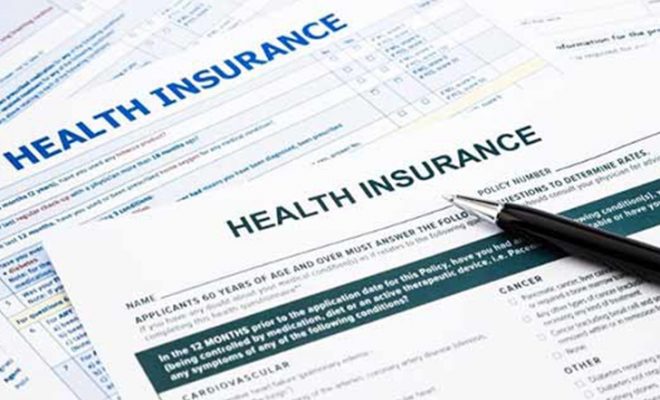7 Essential Steps to Get Ready for Your Upcoming Retirement

In the years leading up to retirement, it’s important to ensure that you will be secure in your golden years. It can feel overwhelming as the years start to pass, and you might find yourself wondering if you have done enough. However, instead of worrying, it is important to use this time to plan wisely. There is still time to compensate for any gaps and tie loose ends.
A financial advisor can help you prepare for your upcoming retirement. This article will also guide you through seven essential steps to get ready for your golden years.
Table of Contents
Below are 7 steps to get you ready for your upcoming retirement:
1. Use your retirement accounts to their full potential
Not only do retirement accounts like 401(k)s and Individual Retirement Accounts (IRAs) provide access to a wide range of investment options to grow your savings, but they also let you strategize your tax planning. With tax-advantaged accounts, you have the flexibility to decide when to pay taxes. You can pay them either now, during your working years, or later, in retirement, and tailor your tax strategy to your specific needs and goals. A few years before retirement is the ideal time to review your retirement accounts and decide on the best course of action. For instance, if you have a traditional IRA or 401(k), you may convert it to a Roth IRA. This strategy, known as a Roth conversion, allows you to convert to a Roth account. This offers tax-free withdrawals during retirement. While the conversion may increase your taxable income the year you make the change, you could save on tax in retirement later.
Another opportunity to boost your savings is by utilizing catch-up contributions. If you are 50 or older, the contribution limits for IRAs and 401(k)s increase. This allows you to save more as you near retirement. In 2025, the standard IRA contribution limit is set at $7,000 for individuals under 50. For those 50 and older, an additional $1,000 catch-up provision raises the limit to $8,000. This applies to both traditional and Roth IRAs. For 401(k) plans, the base contribution limit for 2025 is $23,500. However, individuals aged 50 or older can make an extra $7,500 in catch-up contributions, allowing a total annual contribution of $31,000. Furthermore, under the SECURE 2.0 Act, those aged 60 to 63 can benefit from an even higher catch-up limit of $11,250, enabling a maximum contribution of $34,750 during those years. These limits are applicable to Roth and Traditional 401ks.
Maximizing these contributions in the years leading to retirement can help you enhance your nest egg. If you are able, aim to contribute the full $8,000 to an IRA if you are over 50. For 401(k)s, you can aim to work towards contributing the full standard limit of $23,500, and if you are over 50, take full advantage of the $7,500 catch-up option. Those aged 60 to 63 should further seize the opportunity to utilize the enhanced $11,250 catch-up provision to maximize their savings potential.
2. Minimize your debts
One of the most important things to do before retirement is to eliminate debt. Carrying debt into your golden years impacts your financial security. If you are within a few years of retiring, now is the time to take a close look at your debt situation and create a plan to eliminate as much of it as possible. Debt can force you to allocate your limited income to repayments rather than essential needs. In some cases, retirees with outstanding debts are compelled to return to the workforce because they simply can’t keep up with the repayments. This can create a ripple effect on your overall finances. For instance, if you have a lot of outstanding debt, you might have to draw on your retirement income earlier than planned, which can deplete your savings sooner and compromise your later retirement years. Similarly, instead of delaying Social Security to maximize your monthly benefits, you may find yourself withdrawing it sooner to cover your obligations. Early Social Security withdrawals can lead to smaller checks and reduce your balance in the long run. Additionally, you may also be forced to return to work. This can further impact your Social Security. You could lose some benefits if you earn an income while withdrawing Social Security. The earnings limit for those who have not yet reached full retirement age is $22,320. If your income exceeds this amount, your Social Security benefits will be reduced by $1 for every $2 earned over the limit. Once you reach full retirement age, for every $3 you earn above the limit of $59,520, $1 will be deducted from your benefits. These reductions can make it even harder to manage your debt.
It is key to focus on reducing your debt now to avoid these challenges in the future. You can start by prioritizing high-interest debt, such as credit cards, and meanwhile, develop a repayment plan for any outstanding loans and mortgages. If necessary, consider postponing your retirement date to give yourself more time to eliminate debt. It is also important to maintain financial boundaries with your children at this time. Joint loans, such as co-signed student loans, can create future issues if they are not repaid as agreed. It may be advised to avoid such arrangements so close to retirement.
3. Identify all your sources of income
Understanding where your income will come from is crucial when preparing for retirement. This can help you plan better and maintain financial stability for life. You may have multiple streams of income in retirement, so it is essential to identify each one and plan how and when you will use them.
You can start by listing all your potential income sources. These might include pensions, Required Minimum Distributions (RMDs) from IRA and 401(k) accounts, Social Security benefits, annuities, stocks, bonds, real estate, or other investments. Some sources, like Social Security or annuity payments, provide automatic, consistent income, while others, such as stocks or real estate, require strategic planning on when to sell them. It is vital to categorize these income streams into two groups – those that are predictable and assured, like pensions or RMDs from retirement accounts, and those that need active management, such as buying and selling. For example, if you own real estate, you may need to plan when and how to sell or rent it to ensure it generates a steady income. Similarly, selling stocks should be timed to avoid unnecessary capital gains taxes or market losses.
Once you have identified your income sources, think about how long each will last. For example, pensions and annuities might provide lifetime income, while investments like stocks and bonds will offer returns depending on the return they generate. Knowing how long your funds will sustain you is essential to avoid the risk of outliving your savings. You must also understand the tax implications of your income. For instance, withdrawals from traditional 401(k)s and IRAs are taxable, while Roth IRAs offer tax-free withdrawals. Stocks, real estate, etc., might result in capital gains taxes.
4. Create a retirement budget
Once you have a clear picture of your income sources, you need to start planning your retirement budget. This can help you live comfortably during your retirement years without stressing over exhausting your savings prematurely. You can consider your expenses over the 5 years before you retire. These years will likely look similar to your retirement years in many ways, especially when it comes to healthcare, utilities, and socializing. You can evaluate your expenses during this time to ascertain what your future budget might look like. For example, think about how much you are currently spending on things like commuting, work-related expenses, and eating out during office hours. These are expenses you will not have once you retire. So, you can eliminate them from your retirement budget.
Next, compare your current expenses to your annual income. This can help you understand how much you will need in retirement. It also lets you know how much money you need to generate each year to meet your retirement needs. You may find that your retirement expenses are lower than your current ones, but these can spiral out of control with factors like inflation and potential medical costs that could rise over time.
Now, compare your potential income sources to the budget you have created. This includes your pensions, Social Security benefits, 401(k) and IRA distributions, annuity payments, and any income from investments like stocks and bonds. You must also account for any wealth you can still accumulate before retirement, such as through catch-up contributions to retirement accounts, additional investments, etc. Once you have compared your projected income to your expected expenses, assess whether you have saved enough or if there is still more to be done. If you think your income may fall short in the future, you can consider ways to boost your savings in the years leading up to retirement. You might increase your contributions to retirement accounts, delay retirement by a few years, or cut back on your expenses now to ensure a more secure financial future.
5. Figure out health insurance and Medicare
It is important to always have a reliable health insurance plan in retirement to be financially prepared. In addition to regular health insurance, you must also consider purchasing long-term care insurance to cover costs like assisted living or nursing home care. Understanding Medicare is also crucial, as it will become your primary health insurance once you turn 65. If you start drawing Social Security retirement benefits between the ages of 62 and up to four months before turning 65, you will be automatically enrolled in Medicare Part A and Part B when you turn 65. However, if you decide to delay receiving Social Security benefits until after you turn 65, you will need to sign up for Medicare yourself. The initial enrollment period for Medicare begins three months before you turn 65 and lasts for seven months, three months before your 65th birthday, your birthday month, and three months after. You must keep this in mind when deciding on a retirement age and sign up for Medicare at the right time to avoid penalties.
Also note that if you are still working at age 65 and do not plan to start receiving Social Security benefits, you can apply for Medicare. This ensures you have coverage when you reach 65, even if you continue to work and have employer-sponsored health insurance.
6. Plan where you will live in retirement
Choosing the right place to live during retirement is essential, and it may be advised to prioritize moving to a more affordable state. States like Texas, Tennessee, Nevada, Florida, and Wyoming can be suitable options to save tax as they do not levy personal income tax on retirement income. A study considering factors like community, affordability, and healthcare found states like Delaware to be a top choice due to its absence of state or local sales tax. West Virginia and Georgia are both known for their affordability. South Carolina also ranks highly for retirees with a low cost of living and a warm climate. Missouri is another great option, with affordable housing and accessible healthcare.
On the other hand, some states may not be as favorable due to high living costs or other factors. Alaska, New York, California, Washington, and North Dakota may be less appealing for retirees because of expensive housing or harsh climates.
7. Consult a financial advisor
Speaking with a financial advisor in the years leading up to your retirement can be helpful to ensure that you make the right decisions. A financial advisor can provide you with a step-by-step retirement planning guide to help you prepare for this major life transition. They can help you assess your financial situation and create a plan that aligns with your retirement goals. Additionally, consulting a financial advisor can help you avoid mistakes so close to retirement.
To conclude
It is important to plan for retirement, and the years leading up to it can make a significant difference. Take charge of your future by assessing your expenses, paying down debt, and finding ways to save more, such as through catch-up contributions. You must also evaluate your income sources, ensure you have planned for your healthcare expenses, and consider where you want to live in retirement. These steps can help ensure that you are well-prepared for a comfortable retirement.
Use WiserAdvisor’s free advisor match tool to get matched with seasoned financial advisors who can help align your investment portfolio with your post-retirement goals and needs. Answer some simple questions about your financial needs and get matched with 2 to 3 advisors who can best fulfill your financial requirements.
For additional information on retirement planning strategies that can be tailored to your specific financial needs and goals, visit Dash Investments or email me directly at dash@dashinvestments.com
About Dash Investments
Dash Investments is privately owned by Jonathan Dash and is an independent investment advisory firm, managing private client accounts for individuals and families across America. As a Registered Investment Advisor (RIA) firm with the SEC, they are fiduciaries who put clients’ interests ahead of everything else.
Dash Investments offers a full range of investment advisory and financial services, which are tailored to each client’s unique needs providing institutional-caliber money management services that are based upon a solid, proven research approach
Additionally, each client receives comprehensive financial planning to ensure they are moving toward their financial goals.
CEO & Chief Investment Officer Jonathan Dash has been profiled by The Wall Street Journal, Barron’s, and CNBC as a leader in the investment industry with a track record of creating value for his firm’s clients.




















